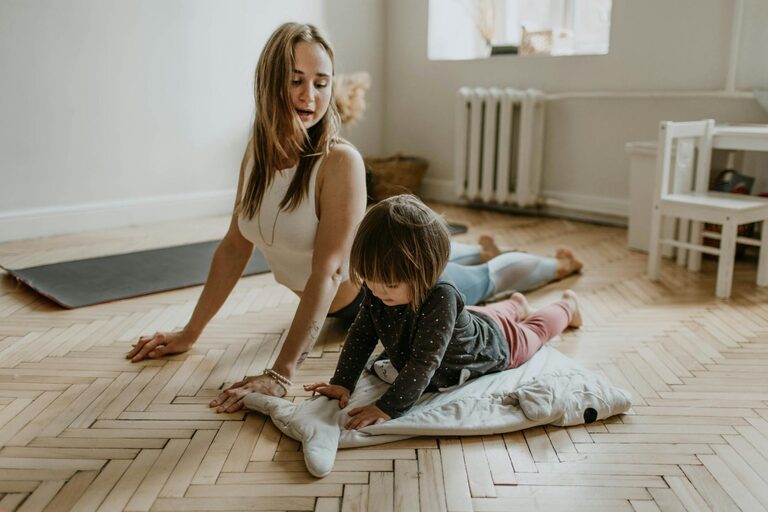A Beginner’s Guide to Stretching at Home for Better Flexibility

Stretching is a wonderful way to improve flexibility, reduce muscle tension, and boost overall well-being. Whether you’re new to exercising or simply want a simple routine to do at home, stretching offers many benefits for both the body and mind. This beginner’s guide will walk you through the basics of stretching at home, including tips, simple exercises, and ways to make stretching a regular habit.
Why Stretching Matters
Many people underestimate the importance of stretching, but it plays an essential role in maintaining muscle health and mobility. Here are some key benefits:
– Increased flexibility: Regular stretching helps lengthen muscles and tendons, allowing for greater range of motion.
– Reduced risk of injury: Stretching prepares your muscles for activity, lowering the chance of strains or sprains.
– Improved posture: Gentle stretches can relieve muscle tightness that causes poor posture.
– Stress relief: Stretching encourages relaxation and can reduce feelings of tension and anxiety.
No special equipment is needed, making stretching a perfect fitness activity you can easily do at home.
Preparing to Stretch: Tips for Beginners
Before diving into your first stretching session, keep these preparation tips in mind:
- **Choose a comfortable space**
Pick a quiet spot with enough room to move freely. Use a yoga mat or carpet for comfort.
- **Wear comfortable clothing**
Loose or stretchy clothes help you move without restricting your muscles.
- **Warm up briefly**
Stretching cold muscles may cause injury. Warm up with 3–5 minutes of light activity like walking or marching in place.
- **Breathe deeply**
Inhale and exhale slowly during stretches to help your muscles relax.
- **Avoid bouncing**
Hold stretches steady, without bouncing, to prevent muscle strain.
Basic Stretching Routine for Beginners
Below is a simple routine you can follow anywhere at home. Hold each stretch for 20 to 30 seconds and repeat 2 to 3 times per side if applicable.
1. Neck Stretch
– Sit or stand with a straight back.
– Gently tilt your head toward your right shoulder until you feel a stretch on the left side of your neck.
– Hold, then switch sides.
2. Shoulder Roll
– Stand tall and roll your shoulders slowly forward 5 times, then backward 5 times.
– This helps relieve shoulder tension.
3. Chest Opener
– Clasp your hands behind your back and straighten your arms.
– Lift your chest as you pull your hands downward slightly.
– Feel the stretch across your chest and shoulders.
4. Cat-Cow Stretch (for spine flexibility)
– Get on your hands and knees.
– Arch your back up like a cat, tucking your chin.
– Then, drop your belly toward the floor and lift your head and tailbone (cow pose).
– Repeat slowly 5 to 8 times.
5. Seated Hamstring Stretch
– Sit on the floor with one leg extended straight and the other bent inward.
– Reach toward the toes of the extended leg while keeping your back straight.
– Switch legs after holding.
6. Quadriceps Stretch
– Stand and hold onto a wall or chair for balance.
– Grab your ankle behind you and gently pull toward your buttocks.
– Keep knees close together.
– Switch legs.
7. Calf Stretch
– Stand facing a wall. Place your hands on the wall.
– Step one foot back, pressing the heel down and keeping the back leg straight.
– Lean forward slightly to stretch the calf muscle.
– Switch sides.
Making Stretching a Daily Habit
Consistency is key to seeing benefits from stretching. Here are ways to make it easier and enjoyable:
– Set a schedule: Dedicate 5 to 10 minutes daily, ideally in the morning or before bed.
– Use reminders: Set phone alarms or sticky notes to prompt you.
– Combine with other activities: Stretch after exercise, or while watching TV.
– Listen to your body: Only stretch to the point of gentle tension, not pain.
– Track progress: Note improvements in flexibility or how you feel after sessions.
When to Avoid or Modify Stretching
If you experience sharp pain, dizziness, or discomfort during any stretch, stop immediately and consult with a healthcare professional if needed.
People with existing injuries, certain medical conditions, or pregnancy should modify stretches or seek advice before starting routines.
Final Thoughts
Stretching is a simple, accessible way to improve your physical health and relaxation. With no special gear required and easy routines to follow, beginners can quickly enjoy the benefits from home.
Start slow, be consistent, and most of all, enjoy the feeling of loosening up your body day by day. Happy stretching!
